Something I’ve always appreciated about Life is Strange as a franchise is its quiet versatility. The elevator pitch would describe it as a choose-your-own-adventure series about superheroes in modern America, sure, but there’s room within that brief outline to tell all sorts of different stories. Every Life is Strange game typically contains some greater or lesser degree of mystery, thriller, sci-fi, and romance; but every new entry adjusts the balance to create something subtly unlike what’s come before.
Life is Strange: Double Exposure plays on that reputation to blindside its audience with the last thing they were expecting. Everything about the game’s marketing suggests a safely nostalgic retread of the original game: Max Caulfield is back, and once again she’s investigating a murder mystery linked to the shooting of her closest friend. And if that’s all you want to know about the game going in, I suggest you go and play it before reading any further, because while I’m not going to spoil any specific plot points, it’s hard to dive too deeply into the themes of this game without giving something away.
To see this content please enable targeting cookies. Manage cookie settings
If you’re still here, then allow me to be the one to tell you that true to its recurring owl motif (à la Twin Peaks, naturally), Life is Strange: Double Exposure is not what it seems. This isn’t so much a whodunnit as a what-the-f**k. It’s not going to work for everybody, of that I’m quite sure; but if you were worried that Deck Nine had played it too safe this time, I’m confident I can convince you otherwise.
As a piece of speculative fiction, Double Exposure digs into some of the questions I’ve always wished that Life is Strange would examine more seriously. What if Max hadn’t accepted that stark binary choice at the end of the first game — the one which, if you stop to think about it for a second, was completely self-imposed — as being set in stone?
What if bystanders witnessing a superpowered event (as happened multiple times in Life is Strange 2, for example) didn’t simply go about their lives as if nothing out of the ordinary had happened, but were profoundly changed and driven to search for answers? Most intriguingly: what if some of these individuals at long last became aware that their extraordinary powers weren’t an isolated phenomenon? Double Exposure certainly appeals to the sci-fi fan in me who’s been clamouring for a more hardcore analysis of this world ever since the original.

As someone who greatly enjoyed Life is Strange: True Colors and thought it provided a much-needed respite after the intensity of LiS2, I nevertheless came to understand some of the criticisms of that game better while playing Double Exposure. When you dig down into it, nothing much happens in True Colors, in as much as there are very few surprises in store if you go in knowing the general concept of the game. Which is all well and good — the idea that not every good game narrative needs a big twist is a hill I will die on — but Double Exposure deploys its shocking moments effectively to steer the story into some very weird and wonderful new directions.
I cannot tell you the number of times I audibly whooped playing this game in a mix of delight and disbelief that, against all expectations, Deck Nine had really pushed the pedal to the floor and were taking us on a ride through the wildest speculative territory that the series has always implied but rarely directly addressed.
There is, of course, a trade-off in all this. Double Exposure features well-written and likeable characters, but fewer moments to tug at your heartstrings — a side effect, perhaps, of the cast being older and more emotionally mature than in previous entries, even when facing up to unrequited love and other painful truths. But equally, it could be because everyone’s rather mission-focussed throughout the story. There’s a problem to be solved and by gosh, a group of academics with incredibly narrow fields of specialisation think they’re the ones for the job.
It’s definitely truth in fiction, that, but you do lose out on some of the more intimate moments where characters in LiS games past would just hang out and talk about life for a bit while waiting for something to happen. Max is so driven that she never just goes home or visits the bar where her potential new love interest works unless there’s a plot-critical goal in mind.
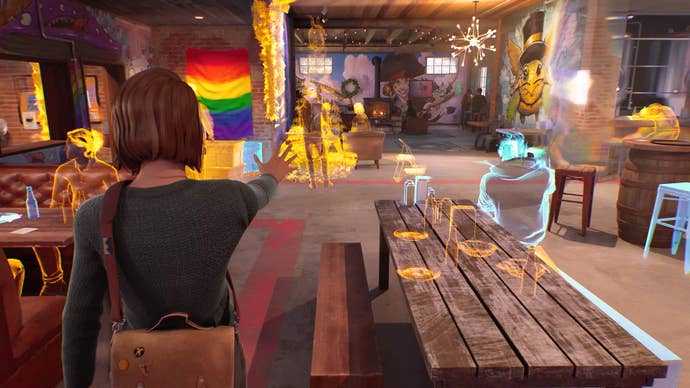
The second, and less vibesy, downside to Double Exposure’s largely welcome swerve into speculative territory is that the murder mystery aspects don’t wrap up nearly as neatly as you might hope. The answer to the central burning question of “who shot Safi?” doesn’t end up mattering nearly as much as its prominence in the marketing — or even the first half of the game — would lead you to believe, and indeed there are surprisingly few repercussions or even firm explanations forthcoming by the time Max has completed her jaunt through the multiverse to catch the killer.
Safi’s murder isn’t even the only mystery that doesn’t get a satisfactory explanation, either: one of the game’s most shocking and exciting sci-fi set-pieces feels like the start of an intriguing new sub-plot, but turns out to in fact be a rather unceremonious way to curtail the more temporal side of the investigation.
Not actually wrapping up the whole mystery in a murder mystery story is undoubtedly a flaw, but in mitigation I’d like to submit the fact that Double Exposure is far from the first genre-blender to meander away from its starting point. And, quite importantly, I didn’t actually notice either of the aforementioned quasi-plot-holes until after I’d finished the game; at the time, I was too intrigued by what was happening to be overly concerned by what wasn’t.
Again, I’d argue that dropped threads are a factor common to all LiS stories; which isn’t to say that this isn’t an issue one can take with the franchise, but more to suggest that if you’ve made it to the fifth game then hopefully it’s a fault you can overlook in exchange for all the many things Double Exposure does well.

A major theme of Double Exposure is regret, which ties in very appropriately to the end of the first game: no matter what choice Max made in Arcadia Bay, she’s haunted by the consequences of not making the opposite decision. And of course, how could it be otherwise? Despite its controversial sidelining of Max’s original partner-in-crime, Chloe, it’s a neat way of ensuring that the player’s original ending choice feeds into Double Exposure in a way that’s important without necessitating that the sequel be two completely different games.
There’s a laudable emotional realism in not retroactively assigning a “good” and “bad” outcome to the original, but showing that Max (and any other survivors of the Arcadia Bay arc in your version of the story) was bound to be deeply and permanently affected by the loss of life she oversaw, regardless of exactly who died and how. Recovery is never on the table, but growth after trauma absolutely is, and it’s through this slightly jaded but undeniably level-headed lens that Max’s return is best viewed.
Repression also runs through the game not only as a central theme, but also as a catalyst for most of the important plot points, so maybe it shouldn’t be too surprising that many characters seem likeable not for their warmth but for their wry aloofness. Max herself is as emotionally guarded as ever, with her diary — presented as an imagined conversation with Chloe, in a subtle mirroring of Chloe’s own missives to an absent Max in Before the Storm — as the only outlet where the player is privy to her raw thoughts.
Indeed, it’s in this that the dissolution of her partnership with Chloe shows itself most keenly — everyone in Double Exposure has a well-trained social filter, so there’s no wildcard going around lobbing verbal grenades just to watch the fallout. It’s one of the many reminders that DE, unlike every other LiS game to date, is firmly about a group of adults in a professional setting.

The cast of new characters who populate Caledon University are as strong as ever — whether it’s Dontnod or Deck Nine at the helm, Life is Strange reliably puts together a compelling ensemble cohort. It’s a shame that they’re almost completely overshadowed by Max’s role as returning protagonist, which was bound to stir up a lot of feelings for long-time fans and be occasionally distracting at best for new players. However — despite the game’s admittedly slow start not making me feel particularly hopeful on this point — Double Exposure does fully justify its use of a returning protagonist.
The central story of Double Exposure, like most LiS titles before it, ultimately doesn’t belong to its playable character, but to someone close to her. Halfway through the game the focus changes more drastically than ever before towards the deuteragonist. Having an established character who can step aside at that dramatically appropriate moment just feels more graceful than building up a brand-new lead, only to have their arc revealed not to matter all that much in the grand scheme of things.
Admittedly, I wonder if the story wouldn’t have worked just as well with Alex or Daniel, who might perhaps have been incorporated without taking such a hard-line on closing the deliberately open ending of the most iconic previous game in the series. But there’s something about having the original protagonist make her return to discover the existence of other powered people that feels more, well, powerful than any alternative could have done.
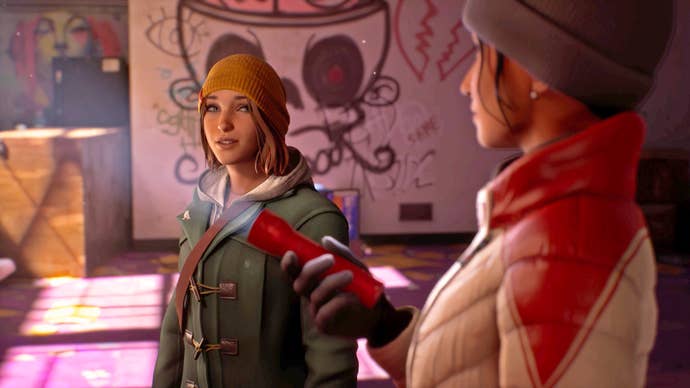
Nevertheless, the return to Max’s perspective does come with its downsides, although to my mind these are largely mechanical ones. Criticism of the non-Max-starring LiS games has often focussed on the fact that no other character’s power has been as free-flowing, with uses largely limited to set-pieces rather than available for experimentation at more or less any point. Like the original, Double Exposure gives you multiple opportunities to noodle around with Max’s powers in any given scene, but this brings with it the same problem as in the first game: namely, that the gameplay loop becomes a touch repetitive.
It’s not an original sin, of course: in the first LiS, Max would encounter a social situation she couldn’t navigate, fumble her way through a conversation that got her the info she needed, and rewind time to conduct the encounter again more smoothly. In Double Exposure, Max encounters an investigative snag she can’t overcome, so quietly hops over to a parallel universe and gets what she needs before coming back to resolve the issue.
This is clearly an intentional Max quirk and for the most part the gameplay remains satisfying — although there came a scene around the midpoint where three or four such fact-finding missions occurred in succession, and the cracks in the formula began to show. Fortunately, the latter half of the game adds some welcome touches of variety.
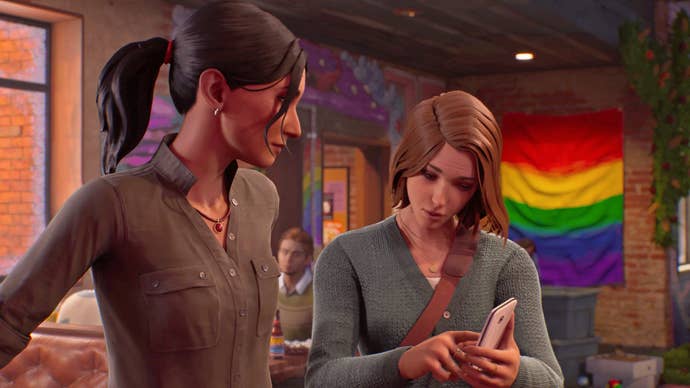
Life is Strange: Double Exposure suffers from what I sometimes call “second book in the trilogy” syndrome. Having decided to build out on what was originally designed as a freestanding structure, initial follow-ups get the worst of all worlds in some ways: any pristine legacy the original had gained is sacrificed in the name of laying the foundation for the future, while the second entry never quite gets to shine in and of itself, because so much of it is geared towards ushering in the transition from stand-alone story to serial. Double Exposure makes it very clear that this won’t be the last we see of Max Caulfield, although exactly when and in what format her next appearance will take place feels deliberately vague.
I have to admit to a degree of ambivalence towards this. As a long-time fan of the entire LiS franchise, am I very excited for future games finally exploring the larger implications of having multiple powered people becoming aware of one another’s existence? Of course. Do I want to see Max Caulfield-helmed games become an annual event, the narrative adventure equivalent to a Call of Duty or an Assassin’s Creed? Absolutely not. The series has a huge cast of intriguing characters to work with at this point, and I very much hope that the intention here is to continue developing as many of them as possible, while still introducing new faces along the way.
Life is Strange: Double Exposure is not the perfect follow-up to Max’s original story, and truly nothing could have been. But, as is mirrored by Max’s own character arc, the intention here is clearly to look forward rather than backward, to a future that is bound to be messy and experimental, but meant to be approached with curiosity about what’s to come rather than regret over what’s been and gone.
As ever with Life is Strange, the vibes of this game are perfectly suited to the story it sets out to tell — even if the details get muddled sometimes.
Life is Strange: Double Exposure was reviewed on PS5 with a code provided by the publisher. It’s available from today on PC, PlayStation 5, and Xbox Series X/S and costs £50/$50 for the Standard Edition, £60/$60 for the Deluxe Edition, or £75/$75 for the Ultimate Edition. A Nintendo Switch port has been announced, but doesn’t have a release date yet.
function appendFacebookPixels() { if (window.facebookPixelsDone) return; !function(f,b,e,v,n,t,s) {if(f.fbq)return;n=f.fbq=function(){n.callMethod? n.callMethod.apply(n,arguments):n.queue.push(arguments)}; if(!f._fbq)f._fbq=n;n.push=n;n.loaded=!0;n.version='2.0'; n.queue=[];t=b.createElement(e);t.async=!0; t.src=v;s=b.getElementsByTagName(e)[0]; s.parentNode.insertBefore(t,s)}(window, document,'script', 'https://connect.facebook.net/en_US/fbevents.js');
fbq('init', '1749355691872662');
fbq('track', 'PageView'); window.facebookPixelsDone = true;
window.dispatchEvent(new Event('BrockmanFacebookPixelsEnabled')); }
window.addEventListener('BrockmanTargetingCookiesAllowed', appendFacebookPixels);
Source link
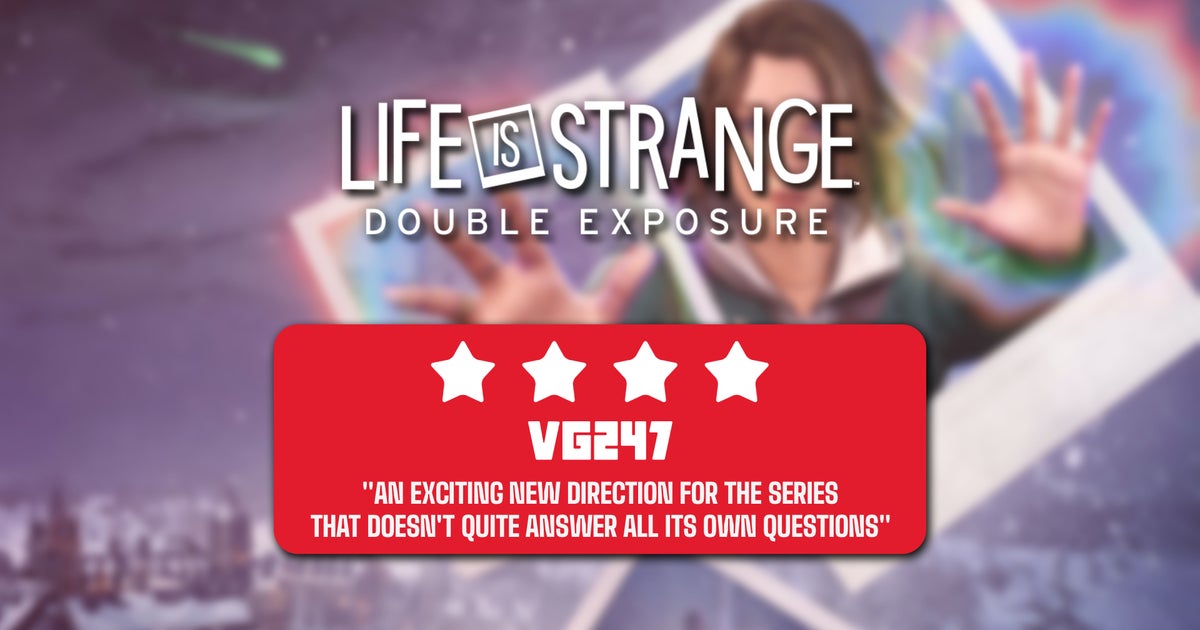
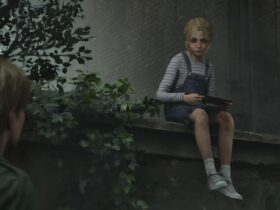



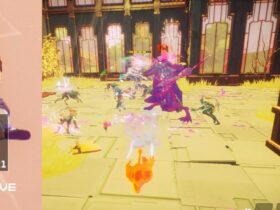






Leave a Reply